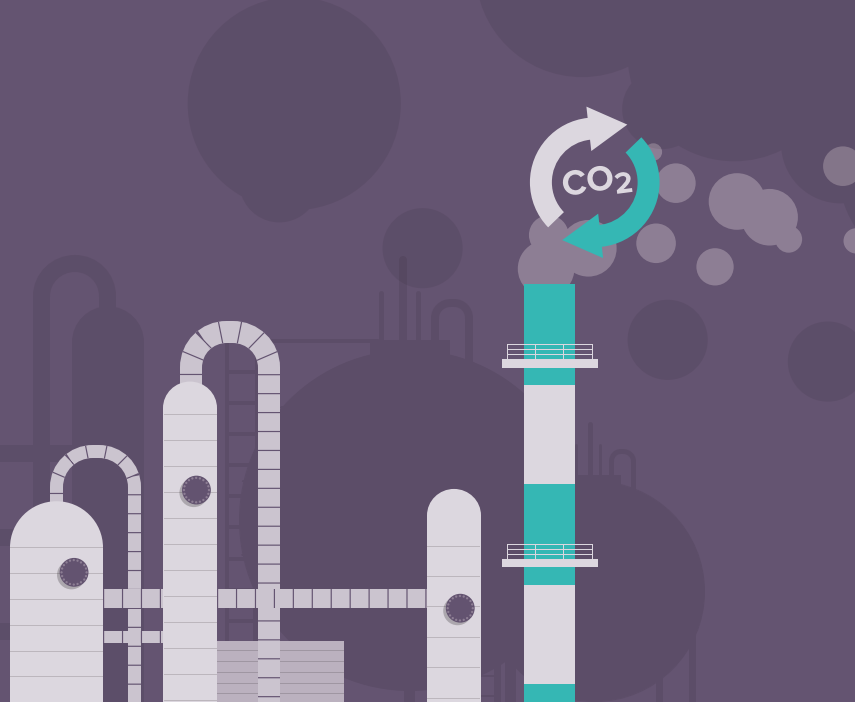
Among the numerous carbon capture technologies, the dominant two are pre- and post-combustion. New, more cost-effective CO2 capture technologies are emerging, and are required in order to attain the SDS objectives. IFPEN and Axens are addressing this situation through the development of the DMX™ process technology, for instance.
The two main carbon capture technologies, according to the distribution of CCS projects worldwide, are pre-combustion and post-combustion (figure 1). Due to their low representation in the distribution of CCS projects worlwide, the other two technologies – oxy-fuel combustion and direct air capture (DAC) – will not be detailed in this article, although they are currently attracting significant development.
Figure 1 - Distribution of CCS projects worldwide (Source: Concawe report no. 18/20 - September 2020)
Pre- and post-combustion carbon capture solutions (figure 2) involve a wide range of technical processes with chemical and physical absorption at the top, and also adsorption on selected solids, membrane or cryogenic processes.
Figure 2 - Pre-combustion and post-combustion CO2 capture routes
These technologies are the most advanced comparatively with other solutions, with a Technology Readiness Level (TRL) of over 5 on a scale ranging from 1 for the initial idea (basic principles observed) to 11 for mature technologies (proof of stability attained). To meet the aforementioned Sustainable Development Scenario (SDS) deadlines, sufficient maturity levels and further developments are required.
Today, the most common process technology for either pre- or post-combustion applications is based on absorption in solvents that will selectively pick up the CO2 present in the gas. This process is illustrated in figure 3. The feed gas is washed in a counter-current in an absorption column with the solvent. The CO2-rich solvent at the bottom of the absorber is then thermally regenerated to release the absorbed CO2.
Figure 3 - Typical absorption process for CO2 removal
As a rule, acid gas solubility reflects the ability of the CO2 to dissolve in the solvent. The higher the gas solubility, the more gas can be treated in the same amount of solvent. The choice of solvent type (chemical, physical or hybrid) for a given application will mainly depend on CO2 partial pressure in the gas to be treated.
As illustrated in figure 4, chemical solvents are clearly more suited to gases with low CO2 partial pressure as encountered in post-combustion applications. CO2 solubility will indeed be higher at low partial pressure in chemical solvents than in physical solvents leading to lower solvent circulation rates and lower overall energy consumption.
Figure 4 - CO2 solubility trends in solvents versus CO2 partial pressure
The selection of solvent type at higher CO2 partial pressure (ppCO2) will be case-dependent and driven by many parameters such as the level of impurities in the gas, energy consumption, the treated gas specification, quantity of equipment, utilities available at the site, and others.
Some typical conditions of industrial gases for post-combustion and pre-combustion applications are summarized below:
|
Industrial process |
Gas pressure (bar) | CO2 content (%vol) | CO2 partial pressure | Type |
| Aluminum production |
Atm | 1-2 | 0.01-0.02 | Post-combustion |
| Natural gas combined cycle |
Atm | 3-4 | 0.03-0.04 | |
| Coal-fired power plant |
Atm | 13-15 | 0.13-0.15 | |
| Cement production |
Atm | 14-33 | 0.14-0.33 | |
| Steel production (blast furnace |
1-3 | 20-27 | 0.2-0.6 | |
| Hydrogen production |
20-30 | 15-20 | 3-6 | Pre-combustion |
| Natural gas processing |
9-80 | 2-65 | 0.5-44 |
Find out more about Pre-combustion and Post-combustion technologies by downloading our dedicated Whitepaper.
New generations of chemical solvents have emerged in recent years reducing the energy used in carbon capture and offering strong resistance to the presence of oxygen and contaminants. They will therefore bring benefits in terms of design and operating costs of the carbon capture unit.
Solvent-based technologies can be further segregated based on the type of solvent used for carbon dioxide capture, including:
A biphasic solvent is used in the case of the DMX™ technology developed by both IFPEN and Axens based on the use of an amine blend which forms two immiscible liquid phases under certain temperature and pressure conditions when loaded with CO2.
The DMX™ technology is built on very solid foundations since it benefits from over 60 years’ experience in CO2 removal on natural gas acquired by Axens and IFPEN through the licencing of the Advamine™ processes.
Benefiting from prior developments through the Octavius and Valorco projects, including several laboratory experiments and pilot-scale testing, the DMX™ technology is now being demonstrated at laboratory scale and is ready to test industrially.
The DMX™ technology (figure 5) represents a real breakthrough for post-combustion CO2 capture based on absorption by a demixing solvent.
Figure 5 - The demixing principle
This second-generation process has several benefits:
Figure 6 - Reduction of energy penalty with DMX™ solvent
|
Interested in reducing your refinery’s carbon footprint, starting with SMR?
Discover the options to capture CO2 from a SMR based hydrogen unit.
|